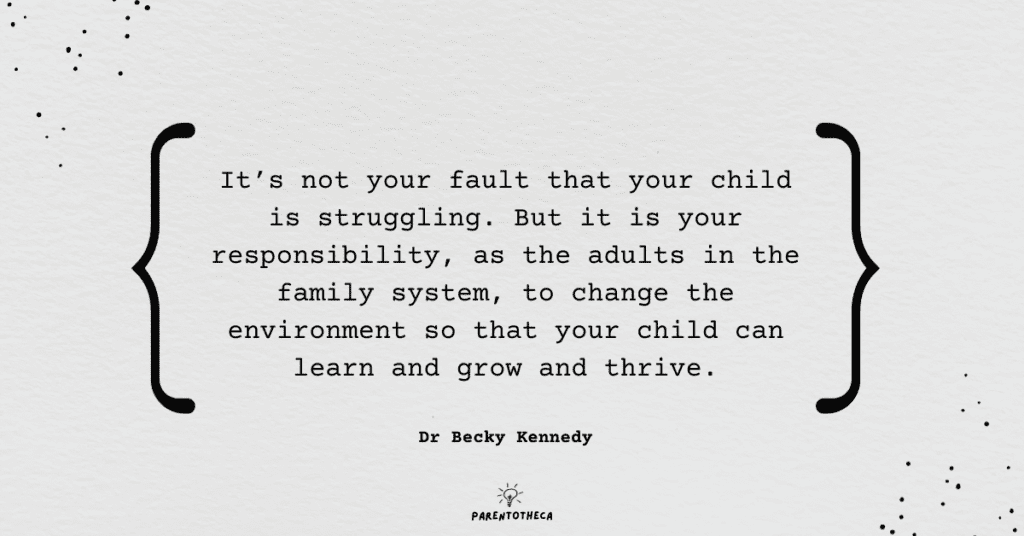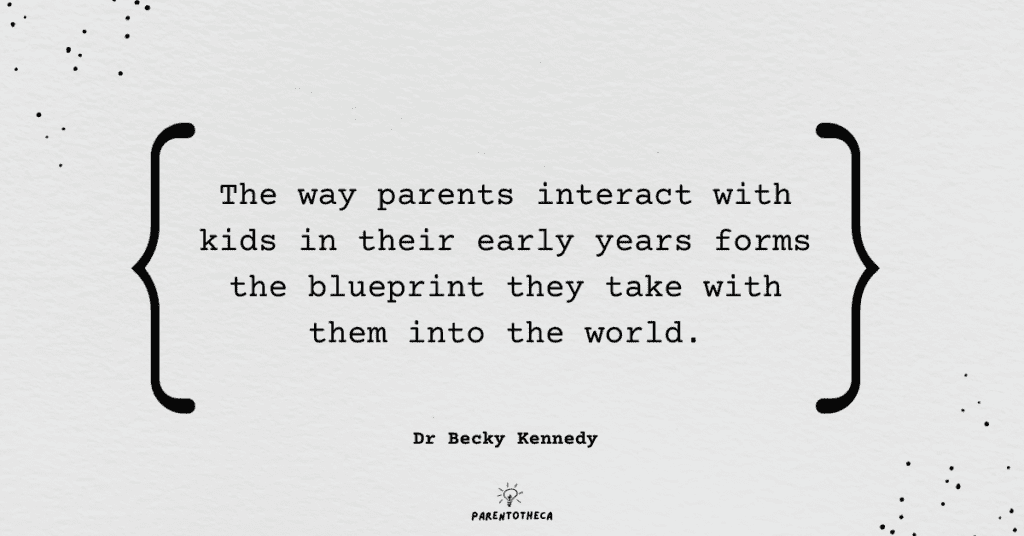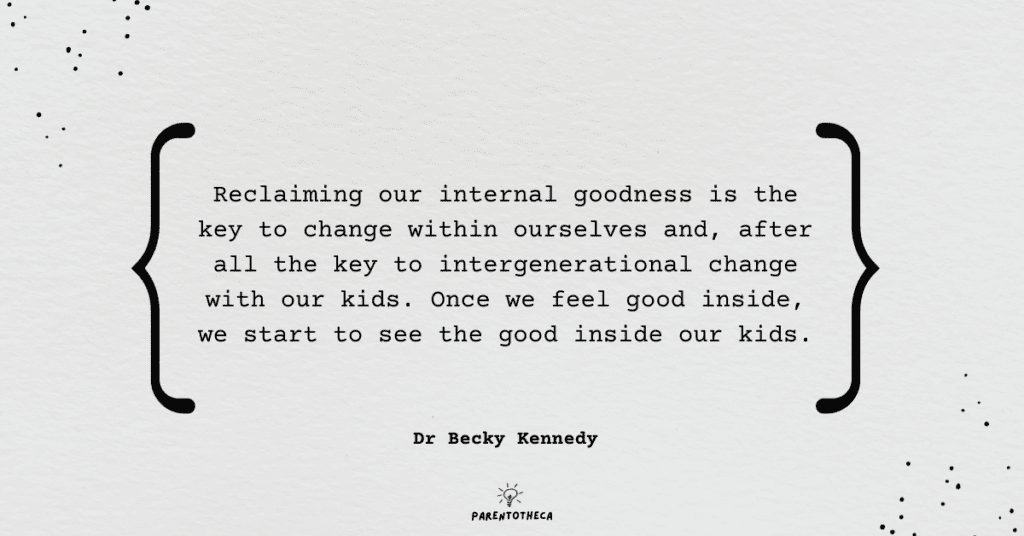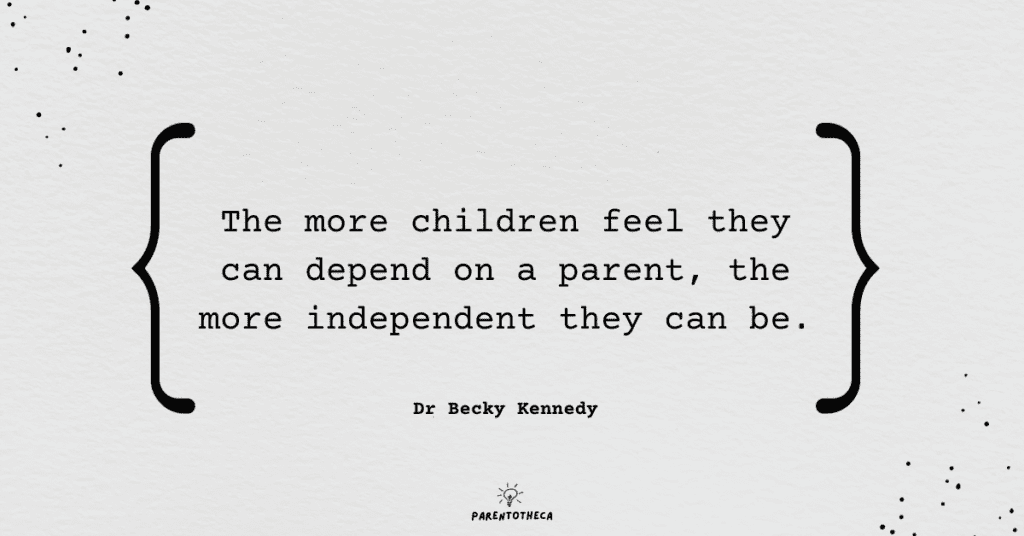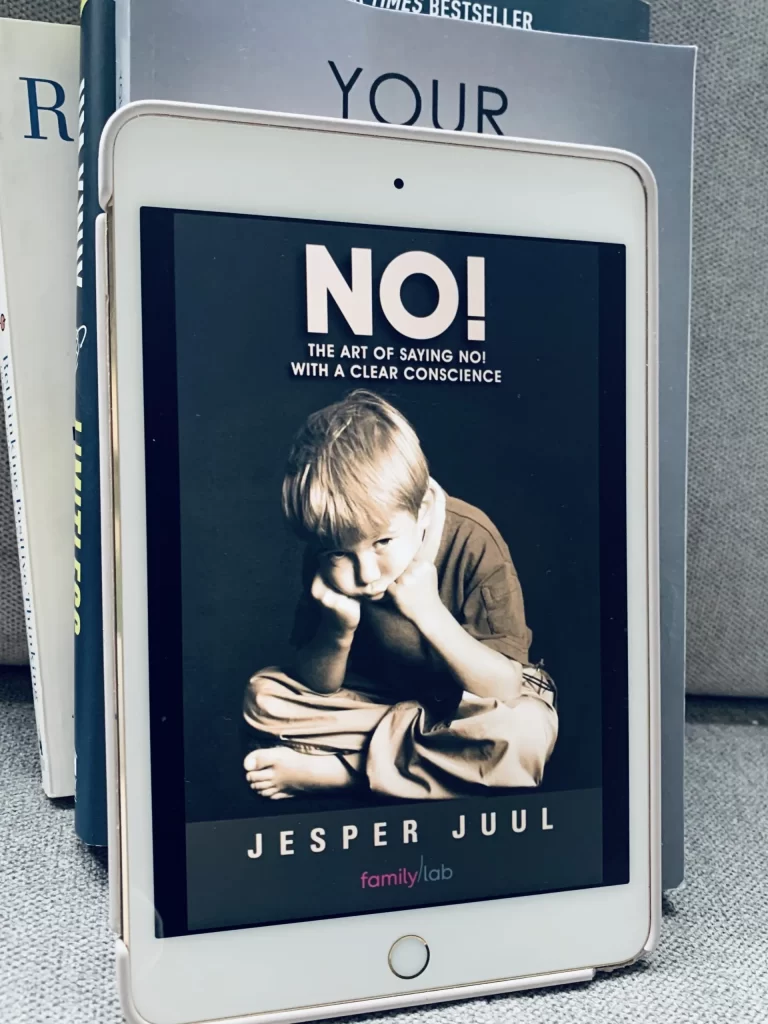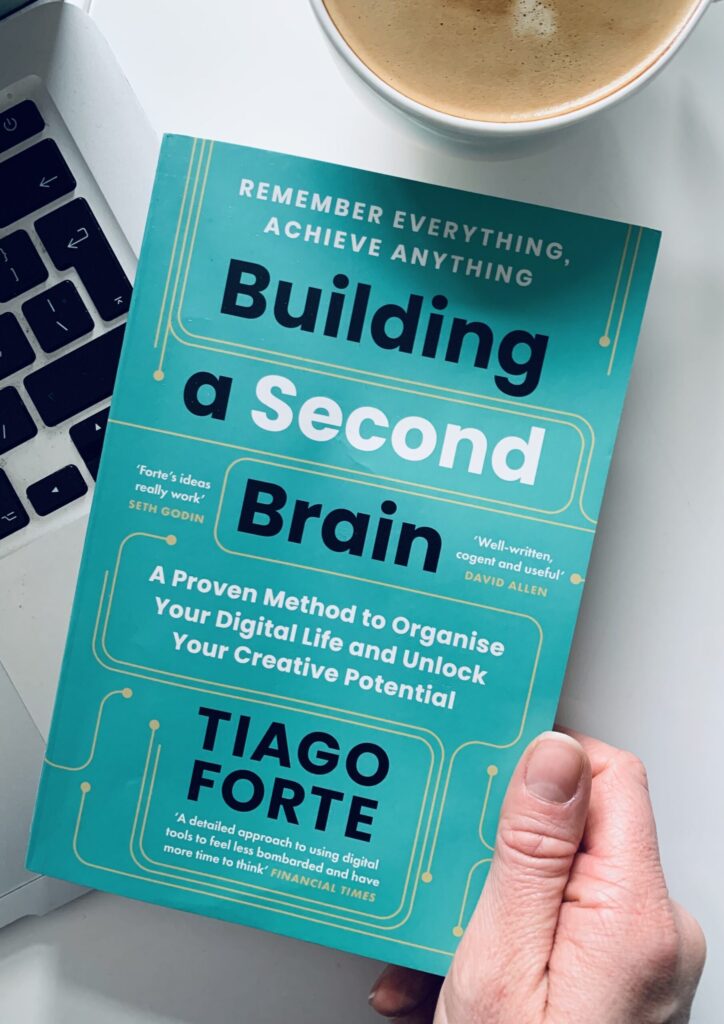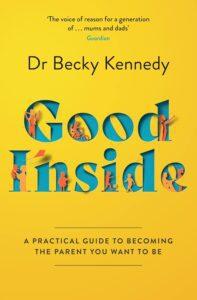 Good Inside. Book Summary
Good Inside. Book Summary
A Practical Guide To Becoming a Parent You Wanted to Be
Dr Becky Kennedy
Thorsons (15 Sept. 2022)
About the author
Dr. Becky Kennedy is a clinical psychologist, bestselling author, and mom of three, who’s rethinking the way we raise our children. Her breakthrough approach has ignited a global movement of over 2 million parents who are dedicated to breaking intergenerational cycles and raising resilient, confident children. Dubbed the “Millennial parenting whisperer” by TIME, Dr. Becky is the author of a #1 New York Times bestselling book, host of the chart-topping podcast Good Inside with Dr. Becky and creator of a global membership community empowering parents with the resources they need to navigate everyday parenting challenges and major milestones. Dr. Becky received a BA in Psychology and Human Development, Phi Beta Kappa and summa cum laude, from Duke University and a PhD in Clinical Psychology from Columbia University.
About the book:
“In my work with patients, I often say that two things are true: practical, solution-based strategies can also promote deeper healing. Many parenting philosophies compel parents to make a choice: they can improve a child’s behavior at the cost of their relationship, or they can prioritize the relationship while sacrificing a clear path to better behavior. With the approach offered in this book, parents can do better on the outside and feel better on the inside. They can strengthen their relationship with their child and see improved behavior and cooperation.This underlying message, that these two things are true, is at the core of so much of what you’re about to read. The information is theory driven and strategy rich; it is evidence based and creatively intuitive; it prioritizes the self-care of a parent and the well-being of a child. A client may come to my office looking for a set of strategies to fix their kid’s behavior, but they leave with so much more: a nuanced understanding of the child underneath the behavior and a set of tools that puts understanding into practice. […]This book is an initiation into a parenting model that is as much about self-development as it is about child development.”
A couple of years ago, I came across Dr. Becky’s Instagram, and her approach to parenting immediately clicked with me—her philosophy, those invaluable tips for navigating tricky parenting moments? Absolute gold! No wonder they call her the “Millennial parenting whisperer.” So, you can imagine my thrill when I stumbled upon her book at our local library—it felt like discovering hidden treasure! I dove straight into its pages.
Good Inside is a total paradigm shift for every parent out there. Main message? Crystal clear: parenting is more than just shaping behaviour; it’s about nurturing resilient, confident humans. And it all starts with putting connection above correction and embracing the feeling that we – parents and kids – are good inside.
This book is a roadmap for parents, guiding us away from self-blame toward confident and sturdy leadership. It is a toolbox filled to the brim with practical tips to create an environment where our children truly thrive.
As you can guess, Good Inside is jam-packed with big ideas and parenting tips. I can’t wait to share a few of my favourites with you.
Let’s jump straight in!
P.S.: In the UK, this book goes by the name “The new Sunday Times bestselling gentle parenting guide for fans of Philippa Perry.” And speaking of Philippa Perry, her book The Book You Wish Your Parents Had Read shares a similar vibe. Both books focus on nurturing healthier parent-child relationships through understanding and empathetic communication—definitely worth checking out!
Key Insights:
The Most Generous Interpretation (MGI)
“Finding the good inside can often come from asking ourselves one simple question: “What is my most generous interpretation of what just happened?” I ask myself this often with my kids and my friends, and I’m working on asking it more in my marriage and with myself. Whenever I utter these words, even internally, I notice my body soften and I find myself interacting with people in a way that feels much better. […]Finding the MGI teaches parents to attend to what is going on inside of their child (big feelings, big worries, big urges, big sensations) rather than what is going on outside of their child (big words, or sometimes big actions). And when we put this perspective into practice, we teach our children to do the same. We orient them to their internal experience, which includes thoughts, feelings, sensations, urges, memories, and images. Self-regulation skills rely on the ability to recognize internal experience, so by focusing on what’s inside rather than outside, we are building in our children the foundation of healthy coping. Choosing the most generous interpretation of your child’s behavior does not mean you are “being easy” on them, but rather you are framing their behavior in a way that will help them build critical emotion regulation skills for their future – and you’re preserving your connection and close relationship along the way.”
Dr. Becky encourages us to wear our “good inside” glasses whenever we face challenging behaviours or intense emotional reactions —whether it’s with our kids, partner, other people, or even ourselves.
Here’s the truth: Kids aren’t trying to give us a hard time; they are the ones having a hard time. And guess what? Grown-ups can feel the same way, too.
The “Most Generous Interpretation” trick pushes us to flex our empathy muscles and look beyond the surface— every behaviour has a meaning. When we take a moment to really understand what’s behind those big feelings, words, or actions, it helps us respond with empathy and kindness.
I love how Mona Delahooke pictures challenging behaviours in her excellent book Beyond Behaviours:
“…think of behaviours as the tip of an iceberg—that part of an individual that we readily see or know. The tip reveals answers to “what” questions about a person. Just as we can see only the tip of an iceberg, while most of it remains hidden underwater, we can observe childhood behaviours with the understanding that the many factors that contribute to them are hidden from view.”
In her book and across her platforms like Good Inside and Instagram, Dr Becky shares hands-on advice on diving beneath the surface, understanding the roots of behaviour, and responding with compassion, love and empathy.
I totally agree with Dr. Becky about the MGI approach—it’s like the perfect foundation for building self-regulation skills and the mindsight that’s super important for overall well-being.
By the way, Dr. Becky is all about mantras! Here’s one for you when your child’s behaviour triggers an emotional response in you: “I have a good kid having a hard time.”
P.S.: Oh, and if you’re looking for more great reads about handling challenging behaviours in kids, I highly recommend Help Your Child Deal With Stress – and Thrive by Stuart Shanker, Beyond Behaviours by Mona Delahooke and The Explosive Child by Ross Greene. They provide fantastic perspectives on understanding and managing challenging behaviours.
Two Things Are True
“We don’t have to choose between two supposedly oppositional realities. We can avoid punishment and see improved behavior, we can parent with a firm set of expectations and still be playful, we can create and enforce boundaries and show our love, we can take care of ourselves and our children. And similarly, we can do what’s right for our family and our kids can be upset; we can say no and care about our kid’s disappointment.The idea of multiplicity – the ability to accept multiple realities at once – is critical to healthy relationships.”
The “Two things are true” concept is at the core of Dr Becky’s parenting approach, and I absolutely love it.
That’s the key to making your child – or any other person, including yourself – feel seen and feel real, even when you are in a conflict. We show curiosity about their experience and, at the same time, show that we are accepting this experience. So, if we put work into holding both truths and allowing both realities, we can build understanding and, in turn, connection with our children and our partner.
On the other hand, when we look at a situation from the “One thing is true”, we are stuck in a convincing mode – an attempt to be “right” and, consequently, make the other person “wrong”. We become judgemental or reactive to other people’s experiences. Why? Because it feels like an assault on our own truth.
So, let’s practice the “two things are true” mindset:
“Two things are true, sweetie. First, I have decided that you cannot watch that movie. Second, you’re upset and mad at me. Like, really mad. I hear that. I even understand. You’re allowed to be mad.”
Dr. Becky says that the most powerful way to use “two things are true” is when you are stuck in a “bad parent” thoughts: “I’m a good parent having a hard time.”
Know Your Job
“In any system, clearly defined roles and responsibilities are critical to ensuring things run smoothly. The opposite is true as well: systems break down when members are confused about their roles or when they start impinging on other people’s functions. Family systems (yes, family units are also systems) are no different, and every member of a family has a job. Parents have the job of establishing safety through boundaries, validation and empathy. Children have the job of exploring and learning, through experiencing and expressing their emotions. Our kids should not dictate our boundaries and we should not dictate their feelings.”
Simply brilliant. Our role is to establish boundaries while providing warmth and love (wise parenting). Meanwhile, our child’s role is to explore and learn within these boundaries, occasionally negotiating them with us.
And it makes so much sense to kids when you frame it this way:
“My job is to ensure you have a healthy and nutritious dinner, so I cooked chicken curry and salad today. Your job is to try it and decide whether you like it and how much you will eat.”
“My job is to support you with developing skills you need for effective learning. Your job is to practice these skills, which means doing your homework. You can decide if you want to do it before your football practice, or after.”
Now, it’s your turn—draft your own parenting job description and one for your child. It’s a handy reference for any parental decision-making.
P.S.: Dr. Becky’s approach emphasizes playfulness, echoing Larry Cohen’s ideas in Playful Parenting—check out our notes for more.
Shame and Positive Discipline
“I define shame as the feeling that “this part of me is not connectable- no one wants to know or be with this part.” It’s a powerful feeling that tells us we should not want to be seen as we are in the moment. Shame encourages us to avoid the contact with others – to hide, to distance ourselves, to move away rather than toward others. And shame activates the ultimate fear for a child, the idea “I’m bad inside, I am unworthy, I am unlovable, I am unattachable…I will be all alone.” Given that children’s survival is dependent on attachment, their bodies read shame as “Ultimate danger! Ultimate danger!” There is nothing as dysregulating to a child as a set of emotions or sensations or actions that leads to the threat of abandonment; it truly is an existential danger to survival. […]Shame “freezes” a child in place as a protection mechanism, and that “freeze” might look like inability to apologize, a reluctance to accept help, or an unwillingness to tell the truth.”
Dr. Becky talks about how lots of tough moments for kids involve feeling ashamed, which can make any situation feel really intense. Shame makes us act in defensive ways, like shutting down, being mean, or pushing people away.
The antidote to shame? Connection! This doesn’t mean saying it’s okay to do something wrong, but rather showing kids that it’s okay to feel this way and that you’re here to help them through it.
So we have two jobs here – to detect shame and then to reduce it so the child feels safe and secure again.
Here’s an example from the book: imagine a child hiding their sibling’s favourite toy and refusing to say where it is. (Sounds familiar, right? It happens in our family sometimes!) And then the big drama unfolds with emotions running high. So here’s a better way to handle it instead of saying, “Why can’t you say sorry to your brother?!”
“Hm… it’s hard to find your ‘I’m sorry’ voice. I have times like that too. I’ll use it for you before you find it again.” Then you, the parent, go to your other child and say, “I’m sorry I took your lovie. I know that was upsetting. Is there anything I can do to make it better?” And then – and this is key – no dart eyes, no lecture, no “See, that was easy!” Just trust – yes, TRUST –that this sank in and move on. Maybe later in the day, when you see the shame is no longer present (you’ll notice because your child is back to her playful self), you can say something like, “Apologizing is hard. It’s even hard for me and I’m an adult!”
So simple, yet so powerful.
P.S.: We all make mistakes and do things we’re not proud of. It’s alright to mess up – after all, we’re only human. Dr. Becky stresses that our aim as parents isn’t perfection but rather knowing how to repair things when there’s a rift. And here’s the kicker: it’s never too late to reconnect and repair with your child or partner. Check out the book for more. Or watch this TED Talk by Dr Becky where she breaks this idea down:
We Don’t do Fair, We do Individual Needs
“I see so many families set a goal of being “fair” as a method of attempting to decrease conflict, but in fact, making things fair is one of the biggest propellants of conflict. The more we work for fairness, the more we create opportunities for competition. When we make things fair, we increase a child’s hypervigilance; we essentially say, “Continue to watch your sibling like a hawk. Make sure you keep track of everything your sibling has, because it’s how you can figure out what you need in this family.” And there’s a longer-term reason why we don’t want to aim for “fairness” in our families: we want to help our kids orient inward to figure out their needs, not orient outward.”
YES! That great strategy is from the Sibling Rivalry chapter, and it’s very handy if you have more than one child.
We don’t do fair, we do individual needs. I totally agree that this approach is much more effective than trying to make everything “fair.” It helps kids to practice distinguishing wants from needs so that later in life, they can make decisions driven from within.
Question for you – do you strive to make everything “fair”? How can you focus more on the individual needs instead of “fairness”?
The Secret Recipe for Self-Regulation
“Avoiding your feelings never ends the way you want it to. In fact, the more you avoid distress or will it to go away, the worse it becomes. Our bodies interpret avoidance as confirmation of danger, and it triggers our internal alert system. The more energy we use to push emotions like anxiety or anger or sadness away, the more powerfully those emotions spring back up. Rather than avoiding emotions we’d rather not face, we need to make a shift. We need to say to ourselves, “[Anxiety/anger/sadness] is not my enemy. My [anxiety/anger/sadness] is allowed to be here. I can tolerate this discomfort.” This tactic is useful for addressing any uncomfortable feeling. The next time you find yourself drowning in an emotion you’d rather avoid, remind yourself to acknowledge, validate, permit. If there’s a secret recipe for self-regulations, that’s it.”
Self-regulation starts with self-awareness and connection with your inner self. Here is a powerful strategy from Dr Becky:
Acknowledge. Validate. Permit.
Let’s break it down:
- Acknowledge – label your feeling (“name it to tame it”). For example, “Today was tough,” or “My chest feels tight and my heart is racing.”
- Validate – help yourself make sense of this feeling by telling yourself a story about why you are feeling this way. “I’m exhausted. Caring for two kids and cooking dinner while they argue with each other…it makes sense that this feels hard.”
- Permit – give yourself permission to feel this way: “I have full permission to feel like life is hard,” or “I’m allowed to feel exactly as I do.”
This tactic helps us digest that feeling before we dive into any self-soothing methods, like taking deep breaths or taking a stroll. And here is how it works with kids:
“You’re feeling so mad right now! Your fists are clenched, your heart’s racing, and you really want to punch your brother (Acknowledge). I get it, it totally makes sense why you’re mad—after all, he just knocked down that Lego tower you worked so hard on building (Validate). It’s okay to feel mad (Permit), but I can’t let you hit your brother (Setting boundaries).”
And that really vibes with Stuart Shanker’s 5 steps of self-regulation from his fantastic book Help Your Child Deal With Stress – and Thrive. For more insights, see our notes.
Action Steps For You:
- Embrace Connection Over Correction: Prioritize nurturing connections with your child, applying The Most Generous Interpretation strategy during challenging moments, and investing in your Connection Capital. Always prioritize repair when there’s a disconnection.
- Master Setting Boundaries: as Dr Becky says: “Boundaries are not what we tell kids not to do; boundaries are what we tell kids we will do.” Practice the art of setting clear, consistent boundaries with your child, emphasizing what actions you’ll take in various situations. Also, set the boundaries around self-care.
- Cultivate Resilience: Shift the focus from solely pursuing your child’s happiness to nurturing their resilience. Respond with empathy, practice active listening and acceptance, and be present. Help your child recognize their strengths and develop problem-solving skills to build resilience.
Quotes From the Book:


